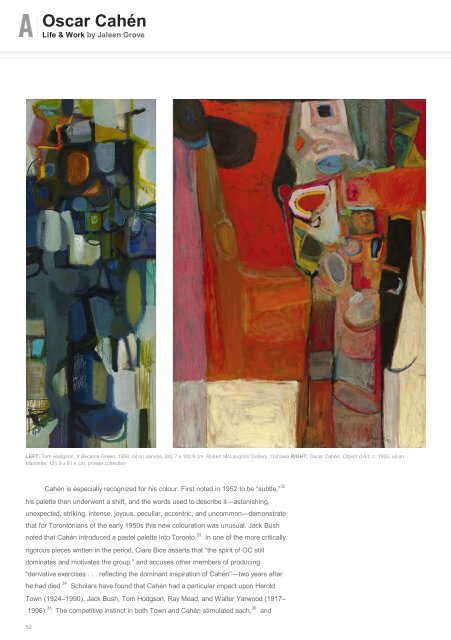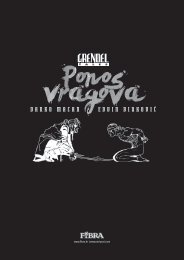Oscar Cahén
Art-Canada-Institute_Oscar-Cah%C3%A9n
Art-Canada-Institute_Oscar-Cah%C3%A9n
Create successful ePaper yourself
Turn your PDF publications into a flip-book with our unique Google optimized e-Paper software.
<strong>Oscar</strong> <strong>Cahén</strong><br />
Life & Work by Jaleen Grove<br />
LEFT: Tom Hodgson, It Became Green, 1956, oil on canvas, 242.7 x 100.9 cm, Robert McLaughlin Gallery, Oshawa RIGHT: <strong>Oscar</strong> <strong>Cahén</strong>, Object d’Art, c. 1953, oil on<br />
Masonite, 121.9 x 91.4 cm, private collection<br />
<strong>Cahén</strong> is especially recognized for his colour. First noted in 1952 to be “subtle,”<br />
his palette then underwent a shift, and the words used to describe it—astonishing,<br />
unexpected, striking, intense, joyous, peculiar, eccentric, and uncommon—demonstrate<br />
that for Torontonians of the early 1950s this new colouration was unusual. Jack Bush<br />
noted that <strong>Cahén</strong> introduced a pastel palette into Toronto. In one of the more critically<br />
rigorous pieces written in the period, Clare Bice asserts that “the spirit of OC still<br />
dominates and motivates the group,” and accuses other members of producing<br />
“derivative exercises . . . reflecting the dominant inspiration of <strong>Cahén</strong>”—two years after<br />
he had died. Scholars have found that <strong>Cahén</strong> had a particular impact upon Harold<br />
Town (1924–1990), Jack Bush, Tom Hodgson, Ray Mead, and Walter Yarwood (1917–<br />
1996). The competitive instinct in both Town and <strong>Cahén</strong> stimulated each, and<br />
52<br />
34<br />
35 36<br />
33<br />
32



